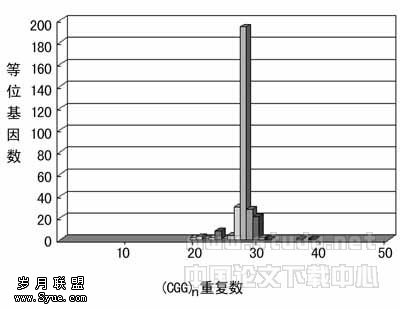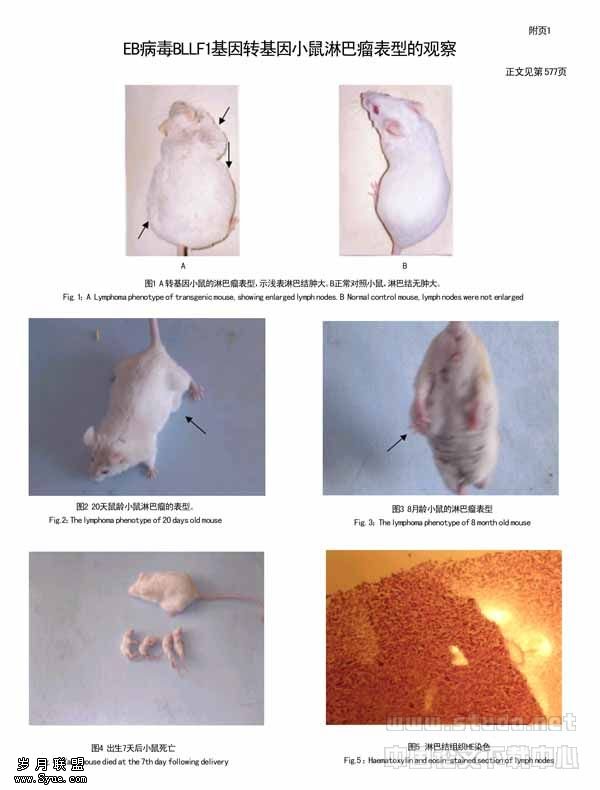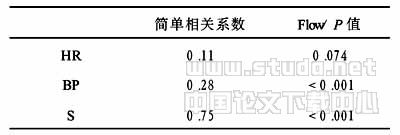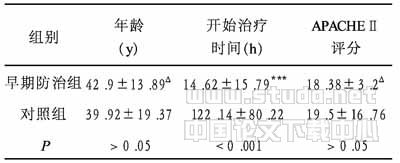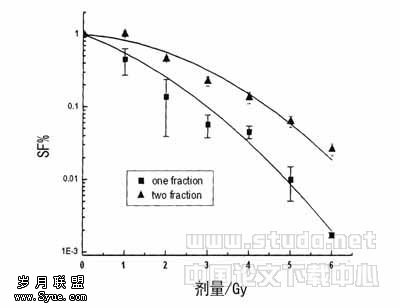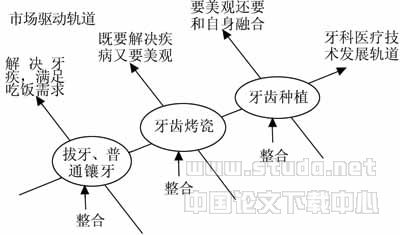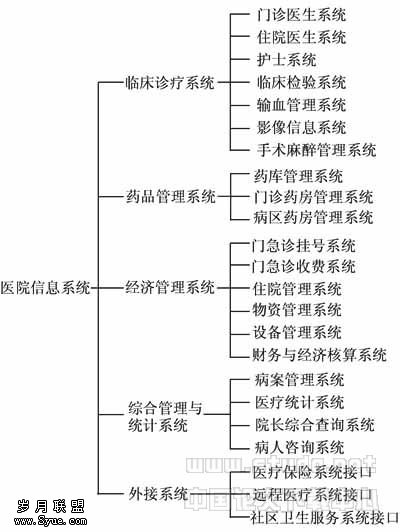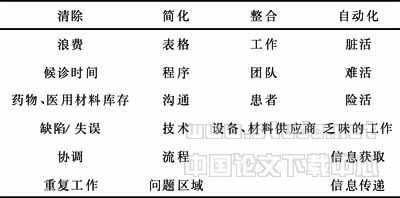针刺镇痛相关受体及正电子配基研究进展
作者:王慧春, 左传涛, 管一晖
【关键词】 针刺镇痛; 电针; 受体; 正发射断层扫描; 放射性配基
As a traditional treatment method, acupuncture can be widely used to regulate physiological function as well as ameliorate pathologic processes, and the capital application is analgesia.
Many studies, including neurobiochemisitry, histopathology and radioligand binding assay of receptor, showed that acupuncture analgesia (AA) was a complex physiological process mediated by various neurotransmitters, neuropeptides, modulators and receptors[1?3]. However, the direct clinical evidence of these studies is limited as they were animal experiments. According to characteristics of receptor ligand?binding domains, positron emission tomography (PET) receptor imaging had its superiority in real?timely investigating the distribution (localization), quantity (density) and function (affinity) of the trace receptors in vivo with non?invasive approach. It would interpret the central action mechanism of AA and promote reasonable application of acupuncture if the PET receptor imaging should be used in AA research. As well?known, it is necessary for receptor imaging to select the suitable radioligand, therefore, the present article reviewed the central neuroreceptors related to AA and their respective radioligands labeled with [11] carbon (11C).
1 Opiate receptors
1.1 Opiate receptors related to AA As a treatment method of stimulation producing analgesia, acupuncture can relieve pain by activating the pain?related receptors in brain, where endogenous opioid peptides (EOPs) and their receptors are the major neurochemical substances involved in AA[1, 2].
Opiate receptors (ORs) are always the prevalent spot in life science since they were discovered. In 1973, there was the first report that ORs can be found in human brain, and then formed the concept of three groups of ORs (μ, κ, δ). From 1970s, many EOPs were discovered sequentially, including enkephalin (ENK), β?endorphin (β?EP), dynorphin (DYN), etc., to 1990s, orphanin FQ receptor (OFQR) and the endogenous selective ligand of μ?OR were identified, to today, ORs have been researched more than thirty years, and four classes of OR ligands have been developed, including μ, κ, δ, OFQR and endomorphin (EM), DYN, ENK, orphanin FQ (OFQ) and their respective precursors[4].
The previous studies of AA mechanisms found that naloxone, a μ?receptor antagonist, could partially reverse the analgesic effects of acupuncture in mice[2]. The level of β?EP in human cerebrospinal fluid was elevated after electroacupuncture (EA), in addition, the analgesia could also be blocked by naloxone[2]. Further studies revealed that the release of EOPs and the activation the ORs by EA were frequency?dependent. By intrathecal administration of various specific antagonists or antisera of OR subtypes, Han[5] uncovered that 2 and 100 Hz EA induced analgesia effects were differentially reduced by blockade of μ/δ and κ receptors, strongly suggesting that low? and high?frequency EA were mediated by μ/δ and κ receptors in the rat spinal cord respectively under the physiological pain conditions. Three classes of EOPs (μ、κ and δ) could be released simultaneously by using low? and high?frequency EA alternately, resulting in the strongest analgesic effect. The experiment[6] associated with the relationship between EA and pathologic pain displayed that both 2 and 100 Hz EA induced analgesic effects on inflammatory pain in rats were reduced by intrathecal administration of μ and δ receptor antagonists. However, there was no obvious effect with κ receptor antagonist. These observations manifested that EA induced the analgesic effects via activating μ and δ receptors but no κ receptor under the pathologic conditions, which possibly concerned with the differences of brain domains mediating high? and low?frequency EA and the receptor expression between the physiologic and pathologic conditions. If the animal species, types of pain, routes and doses of administration or sites of action were different, OFQ would generate differential responses to pain, such as algesia, analgesia or inaction, which were potentially determined by stimulating the different OFQR subtypes[7].
1.2 OR PET radioligands 11C?diprenorphine (DPN) and 11C?carfentanil (CFN) are the most frequently used OR PET radioligands recently. DPN, a nonselective OR partial agonist, can bind to μ, δ, κ receptors with characteristics of high affinity, low dissociation rate, and high ratio of specific/non?specific binding equally. CFN, a μ receptor full agonist with high?selectivity, can still retain high affinity under condition of high sodium concentration in vivo, and easily be labeled with 11C[8]. Studies of brain OR system using PET have been applied for neurochemical mapping and studies of pain, emotion, drug addiction, movement disorders, neurodegeneration and epilepsy[8]. It should be paid close attention to that one group has studied AA by means of combining 11C?DPN PET imaging with functional magnetic resonance, which indicated greater 11C?DPN binding decreases during verum acupuncture in the right orbitofrontal cortex (OFC), left medial prefrontal cortex (PFC), right thalamus, and right insula, and greater 11C?DPN increases during verum acupuncture in the bilateral insula, right medial PFC/anterior cingulate cortex, left OFC, and right brainstem[9].
Talbot et al[10] observed the PET imaging of brain κ receptor with the pretreatment of naloxone in vivo in baboon by labeling κ receptor agonist GR89696 and its homogeneous isomer GR103545 with 11C. It exhibited that 11C?GR103545 was superior to 11C?GR89696 for imaging κ receptor with excellent brain penetration and uptake kinetics. Recently, Poisnel et al[11] have investigated in vivo imaging the κ opioid receptor in mice by binding 11C?MeJDTic, which is the N?methylated derivative of JDTic, a selective κ receptor antagonist, and the results suggested that 11C?MeJDTic appeared to be a promising selective “lead” radioligand for κ opioid receptor PET imaging.
In the mid of 1990s, Madar et al[12] had accomplished PET imaging of δ opioid receptor in human brain with N1’?([11C]methyl) naltrindole (11C?MeNTI), and demonstrated that 11C?MeNTI possessed a high selectivity for δ receptor, and rapid washout in receptor?poor areas and prolonged retention in receptor?rich areas.
2 5?hydroxytryptamine receptors
2.1 5?hydroxytryptamine receptors related to AA The family of 5?hydroxytryptamine (5?HT) receptors is fairly complicated. Nowadays, there are seven discoverable 5?HT receptors, including 5?HT1, 5?HT2, 5?HT3, 5?HT4, 5?HT5, 5?HT6 and 5?HT7. 5?HT1 receptor is comprised of five subtypes, such as 5?HT1A, 5?HT1B, 5?HT1D, 5?HT1E and 5?HT1F. 5?HT2 receptor can be subdivided to three subtypes, including 5?HT2A, 5HT2B and 5?HT2C. While, 5?HT5 receptor contains two subtypes as 5?HT5A and 5?HT5B[13].
The nuclei raphe magnus (NRM), which is a crucial site in the ascending and descending pathways of pain modulatory system, contains abundant 5?HT neurons. The electrolytic lesion of NRM and the blockade of 5?HT biosynthesis could produce inhibition of AA. Furthermore, blockade of 5?HT receptors by using 5?HT receptor antagonists almost abolished AA[13]. Chang et al[14] found that (1) intraventricular injection of exogenous 5?HT exhibited an analgesic effect, which partially mimicked the analgesic actions of EA; (2) the antinociception of EA at different frequencies was attenuated after reducing biosynthesis of 5?HT by administration of the 5?HT inhibitor; and (3) the 5?HT1A and 5?HT3 receptor antagonists, pindobind?5?HT1A, respectively blo?cked three different frequencies of EA?induced analgesia, but the antinociceptive effect of 100 Hz EA was potentiated by the 5?HT2 receptor antagonist, ketanserin. These observations well documented that 5?HT1A and 5?HT3 receptors partially mediate the analgesic effects of EA, but that the 5?HT2 receptor is conversely involved in the nociceptive response.
2.2 5?HT receptor PET radioligands The representative is 5?HT1A receptor PET radioligands. Most of 5?HT receptor tracers belong to the following structural families: (1) compounds with structural similarity to the 5?HT1A antagonist, N?[2?[4?(2?methoxyphenyl)?1?piperazinyl]ethyl]?N?(2?pyridinyl) cyclohexane carboxamide (WAY?100635); (2) derivatives of the 5?HT1A agonist, 8?hydroxy?2?(di?n?propylamino) tetralin (8?OH?DPAT). At present, PET tracers imaging 5?HT1A receptor successfully are mostly 5?HT1A antagonists[15, 16].
WAY100635 is a 5?HT1A receptor antagonist with high affinity and selectivity. 11C?WAY?100635 is the most commonly used tracer for 5?HT1A receptor in vivo. Kumar et al[15] have reported that there had a good correlation between regional distribution volumes of 5?HT1A receptor derived from PET studies using 11C?WAY100635 and in vitro binding levels from studies on postmortem brain tissue using 3H?8?OH?DPAT. DWAY is a minor metabolite of WAY100635. Studies with 11C?DWAY in animal experiments and human volunteers have a substantially greater intensity of signal per unit of radioactive dose as compared to 11C?WAY100635[15]. CPC?222, a structural analogue of WAY100635, has the characteristics of high yield, metabolic stability and high target to non?target ratios in human brain[15]. (R)?RWAY is a reverse amide of WAY100635, which is used for imaging 5?HT1A receptors in rodents and nonhuman primates. 11C?CUMI?101, a 5?HT1A receptor agonist, has been applied to image 5?HT1A receptor in baboon brain, and further studies are required to determine whether 11C?CUMI?101 is a suitable PET tracer for the reliable quantification of 5?HT receptor levels in human being[15]. For the 5?HT2A receptor, PET imaging probes such as 11C?MDL 100907, 18F?altanserin are used for human brain[16]. 5?HT1A and 5?HT2 receptor radioligands aforementioned can be employed to investigate AA. Besides, the radioligands of 5?HT3 receptor related to AA still remain in process of study.
3 Gamma?amino butyric acid receptors
3.1 Gamma?amino butyric acid receptors related to AA Gamma?amino butyric acid (GABA) is the most important inhibitory transmitter in central nervous system (CNS). GABA receptors include three subtypes: GABAA, GABAB, and GABAC. Both GABAA and GABAC are Cl- channel receptors, and GABAB is G protein?coupled receptor.
A series of studres concerned with AA and GABAA receptor showed that acupuncture could elevate the pain threshold in the rats with radiant heat stimulus, and the elevation of the pain threshold could not be reversed by intracerebro?ventricular injection of bicuculline, which is an antagonist for GABAA receptor. It also exhibited that GABAA receptor in brain might not be implicated in AA, but at spinal level, GABAA receptor was contributed in acupuncture?induced spinal segmental inhibition[17]. Zhu et al[17] summarized that intracerebroventricular and intrathecal injections of GABA or baclofen, a GABAB receptor agonist, induced the dose?dependent analgesic effect by activating GABAB receptor. Possibly, GABA is engaged in AA via GABAB receptor in brain, however in spinal cord, both GABAA and GABAB receptors take part in AA.
3.2 GABA receptor PET radioligands 11C?flumazenil, a radiotracer for brain GABAA/benzodiazepine (GABA/BDZ) receptor with high specific binding in vivo, is widely used for numerous neurological and psychiatric disorders, such as epilepsy, stroke, anxiety disorders, and dementia etc. Some subsequent tracers for BDZ receptor, such as 11C?PK11195, 11C?DAA1106, 11C?Ro?151788, 11C?Ro?154513 and 11C?PBR28, can also be applied for GABAA receptor imaging in vivo. 11C?CGP62349, an antagonist for GABAB receptor, would be hopeful to become the suitable PET ligand for GABAB receptor[18]. It can be seen that the actual effects of different GABA receptor types contributed in AA might be validated with the help of the specific PET radioligands.
4 Noradrenaline receptors
4.1 Noradrenaline receptors related to AA Noradrenaline (NA) receptors, which are a group of receptors binding with catecholamines and catecholamine analogues, include α1, α2 and β three major types according to their pharmacological characteristics. On the basis of molecular cloning technique, nine subtypes of NA receptor have been obtained: α1A, α1B, α1D, α2A, α2B, α2C, β1, β2, and β3. NA receptors widely distribute in CNS. The major NA receptors in brain are α1 and β1, and in spinal cord are α1D and α2A[19]。
Catecholamines (CAs) also participate in alleviating pain with α receptor besides regulating the cardiovascular function and emotion activity. CA would induce different analgesic effects along with the variations of administration routes[19]. The most of central noradrenergic neurones locate in the bulbus medullae and pons of varolius, which deliver the ascending and descending fibers to brain and spinal cord, and organize the ascending and descending pathways. The former projects to limbic system via ventrolateral funiculi and evokes the releasing of NA in periaqueductal gray matter, ganglion habenulae and preoptic area by stimulating the ascending NA system, and as a result, the analgesia is impeded by α1 receptor. While the latter reaches to spinal dorsal horn via dorsolateral funiculius, inducing the releasing of NA in dorsal horn by activating the descending NA system, and the analgesia is enhanced by α2 (α2A) receptor[19]. The mechanism of AA is similar to that mentioned above. Kim et al[20] reported that intrathecal injection of yohimbine, an antagonist of α2 receptor, reduced the EA?induced analgesic effects on neuralgic mice obviously, and it was ineffective for injection of furazosin, which is an antagonist of α1?receptor. Whereas, intracerebroventricular injection of clonidine, an agonist of α?receptor, relieved the analgesic effect; phentolamine, an antagonist for α?receptor, strengthened the AA effect[20].
4.2 NA receptor PET radioligands NA receptors imaging with PET is mostly used to explore the modulation of sympathetic nervous system in various cardiac diseases. At present, multiple presynaptic tracers have been introduced, but the availability of radioligands for the postsynaptic NA receptors is deficient. For α receptor relevant to AA, 11C?GB67, a pharmacologic analogue of the α1 receptor antagonist prazosin, has the characteristics of high selectivity, good potential and fast binding for α1 receptor subtype. However, larger clinical studies are still needed to confirm its usefulness and practicability. 11C?CGP12177 is a nonselective, hydrophilic β receptor antagonist which produces good?quality PET images of the heart. However, the radiolabeling via 11C?phosgene is laborious, and in addition specific yields of the tracer are variable and often low. 11C?CGP12388 is developed as an alternative for clinical use, and it has similar potency to 11C?CGP12177. Safe and efficient use of 11C?CGP12388 in the quantification of receptor den?sity has been shown in human body[21]. Nevertheless, the effects of β receptor in AA seem to be weak, thus, the values of β?receptor radioligands in the study of AA are limited at present.
5 Dopamine receptors
5.1 Dopamine receptors related to AA According to the receptor signal transduction and the diversity of ligands binding, dopamine (DA) receptors consist of two families: D1 and D2. Five DA receptor subtypes, D1, D2, D3, D4 and D5 receptors, are named from cloning technique. The D1 family contains D1 and D5 subtypes, while the D2 family is composed of D2, D3, and D4 subtypes.
Gao et al[22] found that dopaminergic system could influence algesia and AA. Intrathecal injection of LY171555, a selective agonist for D2 receptor, or injection of emetomorphine, a D1/D2 receptor agonist, produced analgesic effect (dose?dependent) and potentiated AA. Injection of SKF38393, a selective agonist for D1 receptor, was ineffective on both algesia and AA. While injection of SCH23390, a selective antagonist for D1 receptor, or injection of sulpiride, a selective antagonist for D2 receptor, could attenuate acupuncture?induced analgesia. To summarize, at the spinal level, D2 receptor is implicated in algesia modulation, and both D1 and D2 receptor participate in AA. Wang et al[23] reported that L?tetrahydropalmatine, a DA receptor antagonist, could potentiate AA. Injections of SKF38393, a selective antagonist for D1 receptor, and quinpirole, a selective antagonist for D2?receptor, were performed via nucleus accumbens of mice respec?tively; the former reduced the potentialization for AA by L?tetrahydropalmatine, and the latter was inactive. It illustrated that DA receptors had a bidirectional effect on AA, which mimics NA receptors. It could weaken AA by stimulating brain DA receptors (the major is D1 receptor), and in contrast, activating the spinal cord DA receptors (the major is D2 receptor) could enhance AA.
5.2 DA receptor PET radioligands Dopaminergic system imaging is widely applied for a variety of brain disorders such as Parkinson’s disease, Humtington’s chorea, schizophrenia, etc. 11C?raclopride and 11C?N?propylnoraporphin, D2/D3 receptor antagonists, are mostly employed for investigating the distribution of striatal D2/D3 receptors. Recently, the studies on DA receptor tracers with high affinity have increased, such as 11C?FLB457 and some tracers labeling with 18F, also analogues of raclopride, which have been employed for the visualization of extrastriatal (cortex) DA receptors in vivo. In addition, D2/D3 receptor excitatory tracers such as 11C?(+)?PHNO were produced subsequently, which might have superior sensitivity and affinity in comparison with the inhibitory tracers[16].
For the D1 receptor system, 11C?SCH2399086 and 11C?NNC112 are the widely used D1 receptor PET tracers. The defect of both is their poor selectivity due to the partial affinity to 5?HT2A receptor[16].
Apart from DA receptors, the variation of presynaptic DA transport (DAT) protein also reflects the function of dopaminergic system. 11C?β?CFT [2β?carbomethoxy?3β?(4?fluorophenyl) tropane] is the representative of DAT PET tracers labeled with 11C.
6 Acetylcholine receptors
6.1 Acetylcholine receptors related to AA Central acetylcholine (ACh) receptors comprise muscarinic (M) receptor and nicotinic cholinergic (N) receptor as same as the peripheral ACh receptors. There are five pharmacological subtypes, M1, M2, M3, M4 and M5, according to their different affinity. And also, cloning study manifested five structural subtypes: m1, m2, m3, m4 and m5. m1, m2, m3 were corresponded to M1, M2, M3 respectively, while m4 and m5 are similar to M1. Central N receptor has 12 subunits known from cloning technology, including α2, α3, α4, α5, α6, α7, α8, α9, β2, β3, β4 and β5. Central N receptor exists as pentamer and mostly consists of two α4 subunits and three β2 subunits (α4β2β2α4β2)[1, 16].
Central cholinergic system also plays an important role in AA. The metabolism of ACh in CNS accelerates during acupuncture, thus, the AA effect is strengthened. Inhibiting ACh biosynthesis by intracerebroventricular injection of hemicholine, or blocking M receptor by injection of atropine, could attenuate AA. Whereas, interrupting the degradation of ACh by intracerebroventricular injection of calabarine or injection of exogenous ACh could elevate the pain threshold and reinforce AA[1].
6.2 ACh receptor PET radioligands 11C?4?NMPB, 11C?3?NMPB and 11C?bezotropine are the available PET radioligands currently with non?selectivity for M receptor, which can be applied to research the function of M receptor involved in AA. The studies on selective tracers for M receptor subtypes remain in progress. 11C?nicotine was used in human body to image the N receptors, but the PET images were plagued with high nonspecific binding[16]. 11C?CHIBA?1001 has been successfully used to image α7 subunit of central N receptor in monkey brain by some groups recently[24]. The roles of N receptors in AA might be revealed by using PET imaging with these radioligands in the future.
PET imaging agents for central acetylcholinesterase (AChE) activity, such as 11C?MP3A (N?methyl?3?piperidylacetate) and 11C?MP4A (N?methylpiperidin?4?ylacetate), have been investigated for visualizing AChE activity in human body, and PET studies showed a widespread reduction of AChE activity in the cerebral cortex of Alzheimer’s disease patients[16].
7 Excitatory amino acid receptors
7.1 Excitatory amino acid receptors related to AA Aminoglutaminic acid (Glu) is considered as the major excitatory amino acid (EAA) in CNS, and the next is aspartate (Asp). Some other EAAs with strong excitatory effects also are identified in recent years, including N?methyl?D?aspartate (NMDA), quisqualic acid (QA), kainic acid (KA), and amino?3?hydroxy?5?methylisoxazole?4?propionic acid (AMPA). In mammalian brain, there are five categories of EAA receptors at least, respectively named NMDA receptor, AMPA receptor, KA receptor, L?2?amino phosphono?butyric acid (L?AP4) receptor and metabotropic glutamate receptor (mGluR). The former four are classified into ionotropic receptor, and the latter G protein?coupled receptor[1, 16].
Multiple researches discovered that AA could be enhanced efficiently by blockade of NMDA or AMPA/KA receptors, while activating AMPA/KA receptor would result in algesia. Choi et al[25] found that in complete Freund’s adjuvant (CFA)?induced inflammation model, EA lessened both inflammation agent?induced pain responses and expression of NR1 and NR2 (NMDA receptor subtypes) in the spinal cord. Wang et al[26] summarized that EA and NMDA or AMPA/KA receptor antagonists have a synergic antinociceptive action against inflammatory pain. EA?induced analgesic effects on inflammation mice could be potentiated by combining EA with NMDA or AMPA/KA receptor antagonists, especially with NMDA antagonist. However, it was ineffective while using NMDA or AMPA/KA receptor antagonists alone.
7.2 EAA PET radioligands Despite strenuous efforts, no suitable PET radioligand currently exists for the imaging of NMDA and AMPA/KA receptors contributed in AA in human body. One group recently reported a novel, selective, and high?affinity mGluR5 antagonist that showed promise as a PET radioligand for the imaging of the mGluR5 in human being. This new compound, 11C?ABP688, displayed an in vivo distribution pattern in rodents and human subjects, being consistent with the known regional density of mGluR5[16]. However, the correlation between mGluR5 and AA needs to be verified.
8 Others
Beside the central neurotransmitter?receptor mentioned above, there are some other neuropeptides, neurosteroids and their respective receptors involved in AA, such as cholecystokinin receptor, angiotension Ⅱ receptor, and estrogen receptor. PET radioligands for these receptors are rarely reported at present, which would have extensive study prospects.
Consequently, there are multiple and diverse central neurotransmitter?receptor contributed in AA, and the most of which have their specific PET radioligands (Table 1). PET receptor imaging has been widely employed for exploring a great deal of psychiatric and neurological disorders currently, but it is still at the initial stage in the field of acupuncture. It can be confirmed that identification of more suitable PET radioligands for receptors and developing of various clinical and experimental studies relevant to acupuncture would provide new insights into the neurophysiological and biochemical mechanisms of AA, and facilitate the development of nuclear medicine and traditional Chinese medicine.
Table 1 Central receptors involved in acupuncture analgesia and their PET radioligands with 11C
ReceptorsEffects in AA by activating receptorsRadioligands with 11COR11C?DPN μ/δMediate low frequency EA (physiological pain)11C?CFN/11C?MeNTIMediate EA (pathological pain) κMediate high frequency EA (physiological pain)11C?GR103545, 11C?GR89696Inaction (pathological pain)11C?MeJDTic OFQRDiversity5?HT1A/5?HT3Synergism11C?WAY100635, 11C?DWAY11C?CPC?222, 11C?(R)?RWAY11C?CUMI?1015?HT2Antagonism11C?MDL100907GABAASynergism (spinal cord)11C?flumazenil, 11C?PK1119511C?DAA1106, 11C?Ro151788GABABSynergism11C?CGP62349α1Antagonism (brain)11C?GB67α2Synergism (spinal cord)D1Antagonism (brain)11C?SCH2399086, 11C?NNC112D2Synergism (spinal cord)11C?raclopride, 11C?FLB45711C?N?propylnoraporphin11C?(+)PHNOMSynergism11C?4?NMPB, 11C?3?NMPB11C?bezotropineNMDAAntagonismAMPA/KAAntagonism
【】
1 Xu SF. Neurobiology. 2nd ed. Shanghai: Fudan University Press. 1999: 342?350. Chinese.
许绍芬. 神经生物学. 第2版. 上海: 复旦大学出版社. 1999: 342?350.
2 Han JS. Acupuncture and endorphins. Neurosci Lett. 2004; 361(1?3): 258?261.
3 Zhao ZQ. Neural mechanism underlying acupuncture analgesia. Prog Neurobiol. 2008; 85(4): 355?375.
4 Pasternak GW. Multiple opiate receptors: déj? vu all over again. Neuropharmacology. 2004; 47 (Suppl 1): 312?323.
5 Han JS. Acupuncture: neuropeptide release produced by electrical stimulation of different frequencies. Trends Neurosci. 2003; 26(1): 17?22.
6 Zhang RX, Lao L, Wang L, Liu B, Wang X, Ren K, Berman BM. Involvement of opioid receptors in electro?acupuncture?produced anti?hyperalgesia in rats with peripheral inflammation. Brain Res. 2004; 1020(1?2): 12?17.
7 Yang ZL. Progress in research of the effect of orphanin in analgesia modulation and acupuncture analgesia. Guo Wai Yi Xue Sheng Li Bing Li Ke Xue Yu Lin Chuang Fen Ce. 2001; 21(4): 312?314. Chinese.
杨芝兰. 孤啡肽对痛觉调制和针刺镇痛作用的研究进展. 国外医学生理病理与临床分册. 2001; 21(4): 312?314.
8 Henriksen G, Willoch F. Imaging of opioid receptors in the central nervous system. Brain. 2008; 131(Pt 5): 1171?1196.
9 Dougherty DD, Kong J, Webb M, Bonab AA, Fischman AJ, Gollub RL. A combined [11C] diprenorphine PET study and fMRI study of acupuncture analgesia. Behav Brain Res. 2008; 193(1): 63?68.
10 Talbot PS, Narendran R, Butelman ER, Huang Y, Ngo K, Slifstein M, Martinez D, Laruelle M, Hwang DR. 11C?GR103545, a radiotracer for imaging kappa?opioid receptors in vivo with PET: synthesis and evaluation in baboons. J Nucl Med. 2005; 46(3): 484?494.
11 Poisnel G, Oueslati F, Dhilly M, Delamare J, Perrio C, Debruyne D, BarréL. [11C]?MeJDTic: a novel radioligand for kappa?opioid receptor positron emission tomography imaging. Nucl Med Biol. 2008; 35(5): 561?569.
12 Madar I, Lever JR, Kinter CM, Scheffel U, Ravert HT, Musachio JL, Mathews WB, Dannals RF, Frost JJ. Imaging of delta opioid receptors in human brain by N’?([11C] methyl) naltrindole and PET. Synapse. 1996; 24(1): 19?28.
13 Hoyer D, Clarke DE, Forzard JR, Hartig PR, Martin GR, Mylecharane EJ, Saxena PR, Humphrey PP. International Union of Pharmacology classification of receptors for 5?hydroxytryptamine (Serotonin). Pharmacol Rev. 1994; 46(2): 157?203.
14 Chang FC, Tsai HY, Yu MC, Yi PL, Lin JG. The central serotonergic system mediates the analgesic effect of electroacupuncture on ZUSANLI (ST36) acupoints. J Biomed Sci. 2004; 11(2): 179?185.
15 Kumar JS, Mann JJ. PET tracers for 5?HT1A receptors and uses thereof. Drug Discov Today. 2007; 12(17?18): 748?756.
16 Ametamey SM, Honer M, Schubiger PA. Molecular imaging with PET. Chem Rev. 2008; 108(5): 1501?1516.
17 Zhu LX, Ye YY, Mo XR. The important role of activation of GABAB receptors in acupuncture analgesia. Zhen Ci Yan Jiu. 2002; 27(2): 85?91. Chinese with abstract in English.
朱丽霞, 叶燕燕, 莫孝荣. 激活GABAB受体在针刺镇痛中的作用. 针刺研究. 2002; 27(2): 85?91.
18 Fujita M, Imaizumi M, Zoghbi SS, Fujimura Y, Farris AG, Suhara T, Hong J, Pike VW, Innis RB. Kinetic analysis in healthy humans of a novel positron emission tomography radioligand to image the peripheral benzodiazepine receptor, a potential biomarker for inflammation. Neuroimage. 2008; 40(1): 43?52.
19 Millan MJ. Descending control of pain. Prog Neurobiol. 2002; 66(6): 355?474.
20 Kim SK, Park JH, Bae SJ, Kim JH, Hwang BG, Min BI, Park DS, Na HS. Effects of electroacupuncture on cold allodynia in a rat model of neuropathic pain: mediation by spinal adrenergic and serotonergic receptors. Exp Neurol. 2005; 195(2): 430?436.
21 Lautam?ki R, Tipre D, Bengel FM. Cardiac sympathe?tic neuronal imaging using PET. Eur J Nucl Med Mol Imaging. 2007; 34 (Suppl 1): S74?S85.
22 Gao X, Xin BM, Xu SF. Effect of intrathecal injection of dopamin receptor agonists/antagonists on pain and acupuncture analgesia in rats. Sheng Li Xue Bao. 1998; 50(1): 43?48. Chinese.
高秀, 辛冰牧, 许绍芬. 大鼠鞘内注射多巴胺受体激动剂与拮抗剂对痛及针刺镇痛的影响. 生报. 1998; 50(1): 43?48.
23 Wang YQ, Cao XD, Wu GC. Role of dopamine receptors and the changes of the tyrosine hydroxylase mRNA in acupuncture analgesia in rats. Acupunct Electrother Res. 1999; 24(2): 81?88.
24 Hashimoto K, Nishiyama S, Ohba H, Matsuo M, Kobashi T, Takahagi M, Iyo M, Kitashoji T, Tsukada H. [11C]CHIBA?1001 as a novel PET ligand for alpha7 nicotinic receptors in the brain: a PET study in conscious monkeys. PLoS ONE. 2008; 3(9): e3231.
25 Choi BT, Kang J, Jo UB. Effects of electroacupuncture with different frequencies on spinal ionotropic glutamate receptor expression in complete Freund’s adjuvant?injected rat. Acta Histochem. 2005; 107(1): 67?76.
26 Wang L, Zhang Y, Dai J, Yang J, Gang S. Electroacupuncture (EA) modulates the expression of NMDA receptors in primary sensory neurons in relation to hyperalgesia in rats. Brain Res. 2006; 1120(1): 46?53


